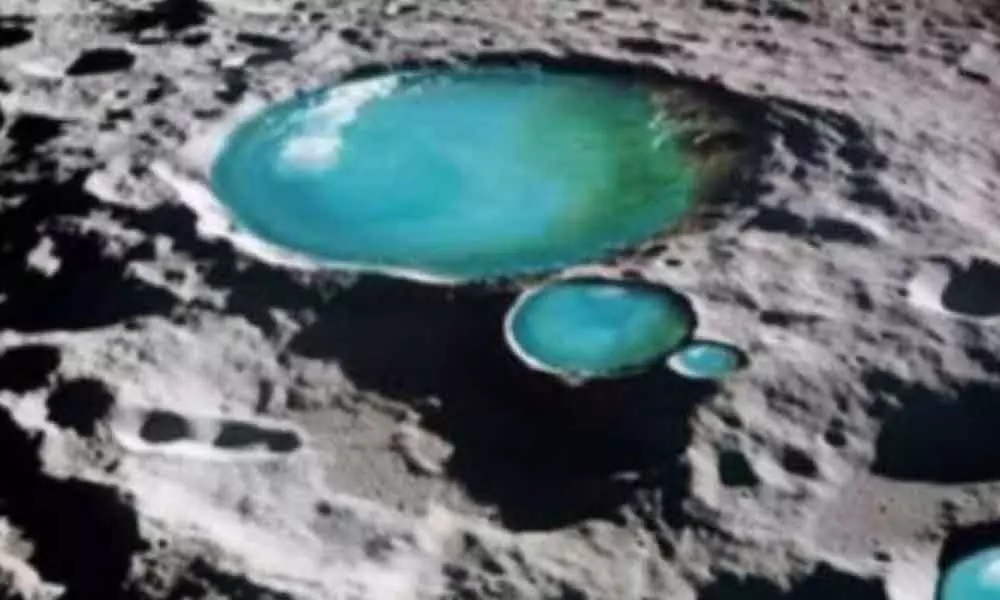Live
- Adani tried to enter Delhi's power sector: AAP's Sanjay
- International Kabaddi Federation sanctions World Super Kabaddi League 2025
- Pollution crisis fuels demand for CNG, BS-6 vehicles during wedding season
- Solar panels empowering UP farmers, says Yogi
- Bomb cyclone leaves hundreds of thousands without power in US
- Is Pushpa-2 Postponed Again? Here’s What Makers Said
- Narsipatnam tank bund my dream project, says Speaker
- MLA Yashaswini slams Errabelli
- Sluggish pace persists at Stamps & Registration Office
- Kanguva’s Box Office Disaster: Is This the End of Suriya’s Mega Hit?
Just In
Chandrayaan-2 confirms presence of water molecules, hydroxyl on Moon


Chandrayaan-2 confirms presence of water molecules
The Chandrayaan-2 Mission, whose rover had a fatal ending on the Moon, continues to lead to new discoveries thanks to its orbiter that is currently orbiting the Moon. The latest is the detection of hydroxyl and water molecules on the lunar surface, according to India Today report.
The Chandrayaan-2 Mission, whose rover had a fatal ending on the Moon, continues to lead to new discoveries thanks to its orbiter that is currently orbiting the Moon. The latest is the detection of hydroxyl and water molecules on the lunar surface, according to India Today report.
Researchers used the data obtained by the Chandrayaan-2 orbiter's imaging infrared spectrometer (IIRS), an instrument that collects information from the Moon's electromagnetic spectrum, to understand the mineral composition of the satellite. They analysed data from three strips on the Chandrayaan-2 IIRS sensor for hydration, which led to "unambiguous detection of OH (hydroxyl) and H2O (water) signatures."
The research findings, published in the journal Current Science, state that hydration absorption was observed at all latitudes and surface types in varying degrees. "The initial data analysis from IIRS clearly demonstrates the presence of widespread lunar hydration and unambiguous detection of OH and H2O signatures on the Moon between 29 degrees north and 62 degrees north latitude," researchers said. It was also observed from the data that the brighter sunlit highland regions at higher latitudes of the Moon were found to have higher hydroxyl or possibly water molecules.
Scientists at the Indian Institute of Remote Sensing (IIRS) in Dehradun opine that the formation of hydroxyl and water on the Moon is due to space weathering, a process of interaction of solar winds with the lunar surface. This combined with impact events lead to chemical changes that further triggered the formation of reactive hydroxyl molecules. "The proper interpretation of hydration feature through spectral analysis is significant as it provides important inputs regarding the geology and geophysics of the mantle in terms of their mineralogy, chemical composition, rheology and solarwind interaction," the researchers said in their paper.
The stability of these hydration features depends upon how they interact with one another, with the surface and their environment at a particular temperature range and therefore provides important clues about their origin and evolution. The paper notes that the new discovery is "significant for future planetary exploration for resource utilisation" -- something that would be of interest for countries rushing to the Moon with plans to build lunar bases.
Several countries including India are in the process of returning to the Moon with new probes and tools to harness rare-Earth minerals that are likely present on the natural satellite.

© 2024 Hyderabad Media House Limited/The Hans India. All rights reserved. Powered by hocalwire.com






